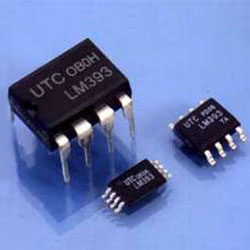
Converting PCM into some useable form of PWM turns out to be quite a can of problems and its success has taken a lot longer than anyone thought.
Serious study began with Dr. Mark Sandler’s landmark paper delivered at the AES Convention in 1984 based on his PhD research (Sandler, Mark, “Towards A Digital Power Amplifier,” Preprint 2135, presented at the 76th Convention of the Audio Engineering Society, J. Audio Eng. Soc. (Abstracts), vol. 32, p. 1009 (Dec. 1984).
Dr. Sandler became a professor in the EE department at King’s College London, where he and his students have delivered over a dozen papers on the subject. Joining his research was the Technical University of Denmark (DTU) who targeted this technical area for intensive research with great results.
At least three DTU students turned their university research into successful products.
The first was Lars Risbo who completed his PhD in 1994, went on to publish an important AES paper (Risbo, Lars, “Performance of an All-Digital Power Amplification System,” presented at the 104th Convention of the Audio Engineering Society, Preprint 4695, J. Audio Eng. Soc. (Abstracts), vol. 46, p. 584 (June 1998), and then teamed up with classmate Niels Anderskouv to found Toccata Technology (acquired by Texas Instruments in 2000).
Along the way they created the TACT Millennium, billed as the world’s first true digital audio power amplifier, which debuted to rave reviews at the January 1998 Winter Consumer Electronics Show.
Meanwhile, another DTU student, Karsten Nielsen, completed his PhD in 1998, while working for Bang & Olufsen (B&O) along the way.
He presented several papers at various AES conventions and had one published in the AES Journal (Nielsen, Karsten, “High Fidelity PWM-Based Amplifier Concept for Active Loudspeaker Systems with Very Low Energy Consumption,” J. Audio Eng. Soc., Vol. 45, pp. 554-570, July/August 1997. Upon leaving the university he joined B&O as Technology Director and now heads up their digital power amplifier division producing the ICEpower modules.
These were not the only successful researchers, but their contributions were significant. The result of their efforts, combined with that of many other individuals, is that today we are seeing the first generation of true digital audio power amplifier integrated circuits.
With Texas Instruments’ acquisition of Toccata Technology (Niels Anderskouv is now TI’s director of digital audio development), their first offering is the TDAA (True Digital Audio Amplification) chip set consisting of the TAS5000 plus two TAS5100s.
The TAS5000 is a PCM-PWM modulator that directly handles S/PDIF and USB data streams, converting 16- to 24-bit data, sampled at 44.1 kHz to 96 kHz. The TAS5100 is an outboard power MOSFET H-bridge. Scheduled for release in 2001 is a similar part to the TAS5000 with a 1394 interface.
Cirrus Logic’s entry into the PCM-PWM technological arena is based partly on proprietary technology purchased from B&W Loudspeakers (resulting from Peter Craven’s extensive collaboration with them in the late ‘80s resulting in patents relating to high-resolution D/A conversion and PWM power amplifiers [Craven, Peter, “Toward the 24-bit DAC: Novel Noise-Shaping Topologies Incorporating Correction for the Nonlinearity in a PWM Output Stage,” J. Audio Eng. Soc., Vol. 41, pp. 291-313, May 1993]).
They are readying the CS44L10 Class D amplifier (The part number has been announced but no further information is available as of this writing). for introduction in mid-2001.
Apogee Technology Inc. (not affiliated with Apogee Electronics or Apogee Sound) is already marketing their patented DDX (Direct Digital Amplification) series, consisting of a DDX2000 PCM-PWM processor and a DDX2060 output stage.
Three suppliers already offer true digital audio power amplifier technology. Based on their success others will follow quickly. We have yet to hear from Analog Devices, Motorola, National Semiconductor, NEC, Sony or European IC houses, although it is reasonable to expect to hear that B&O has licensed their ICEpowerâ technology to someone for integration and use with low voltage products—Philips perhaps?
And all these technologies are available as core intellectual property for directly integrating into system-on-chip solutions, completing the all-digital audio world.
